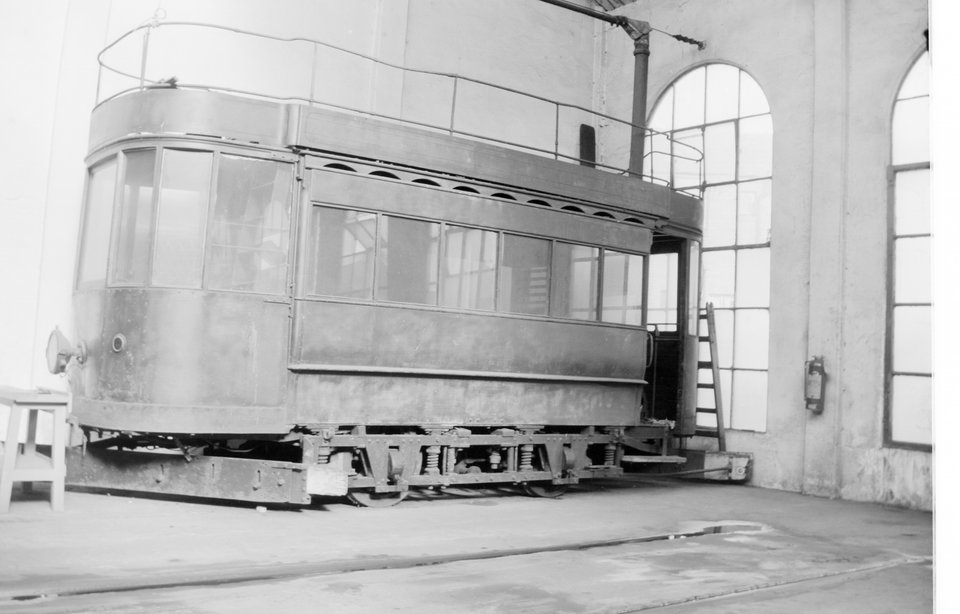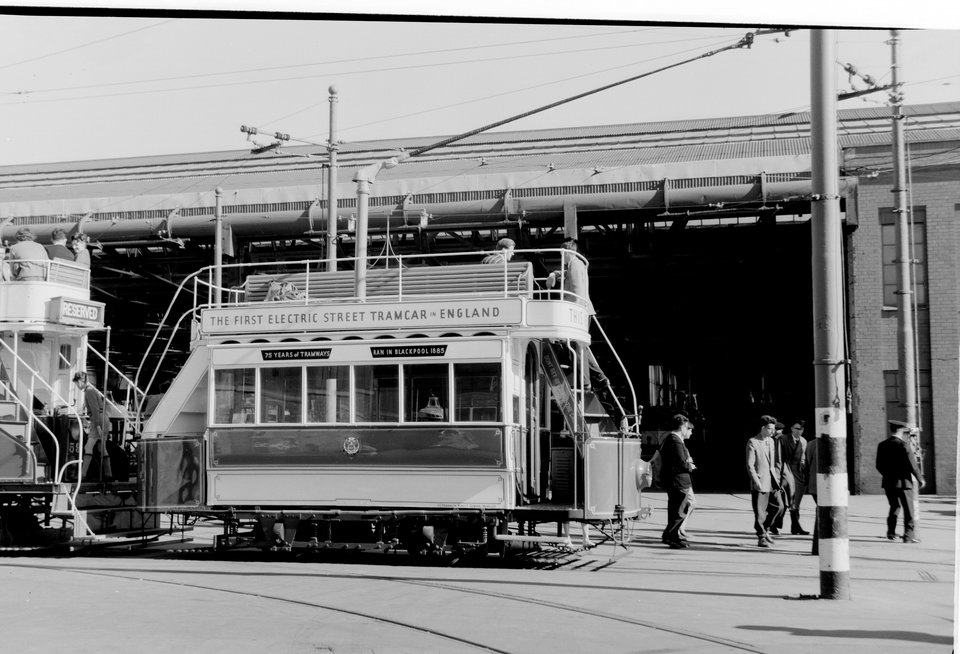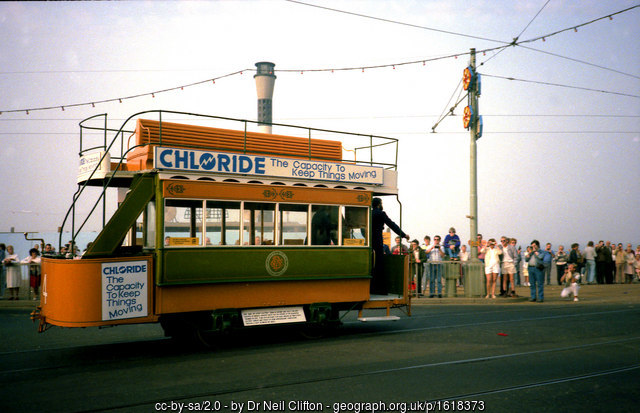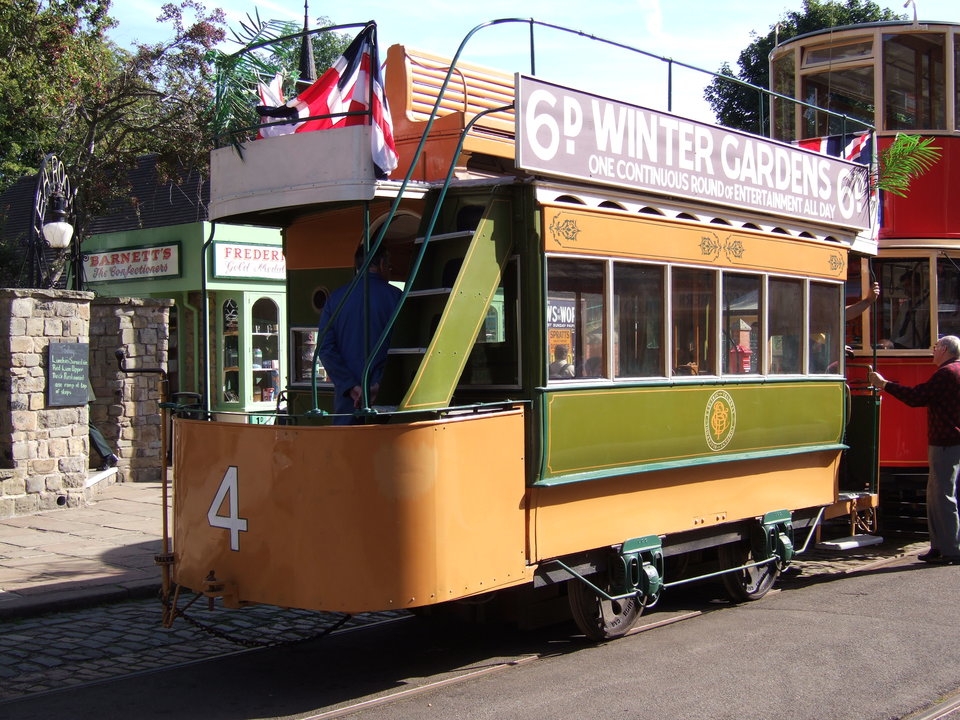Blackpool Electric Tramway Company Ltd. No. 4
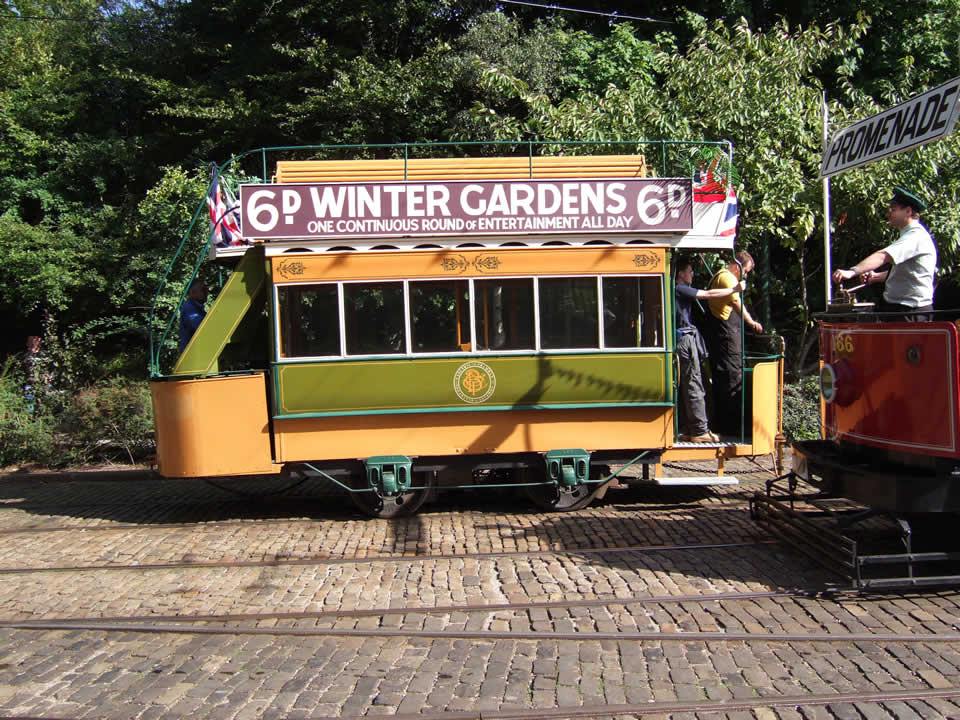
Photo: Jim Dignan
Blackpool Tramways no. 4 is a truly historic tramcar, having been built for Britain’s first electric street tramway, which opened on 29th September 1885. The short line was approximately two miles in length and ran along the promenade. The power for the tramcars was provided by means of a ‘conduit’ system whereby the electric current was carried in a specially constructed channel under the roadway instead of using overhead power lines.
The tram was unusually small for a double decker, being designed to accommodate just 16 passengers on the lower deck and a similar number on the back-to-back “knifeboard” seating arrangement on the upper deck – roughly the same as contemporary double deck horse trams. In appearance as well as capacity, the tramcar closely resembled the horse trams from which it was evidently derived.
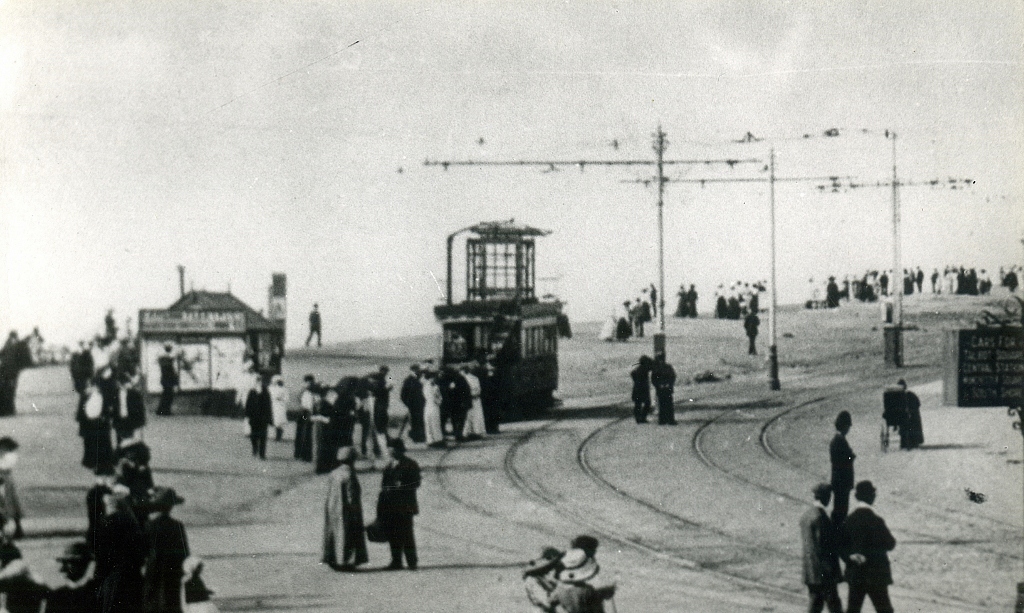
Blackpool 4 at Gynn. Photo courtesy of Crich TMS photo archive, date unknown.
The tramcar was one of six ‘winter’ cars constructed for the tramway’s ten-car fleet, which meant that its lower saloon was enclosed, though it was actually operated throughout the year.
Specification
- Type of tram
- 4 wheel 6 window double deck open top electric tram with knifeboard seating on upper deck
- Livery
- Orange (sand), green and white
- Seating capacity
- 32
- Date built
- 1885
- Date entered service
- September 1885 on opening of the system
- Manufacturer of body
- Lancaster Railway Carriage & Wagon Co.
- Manufacturer of truck
- Trunnion
- Gauge
- 4’ 8½”
- Motor
- Originally 1 x 7hp motor and chain drive.. Now has a battery powered 6hp split-field motor.
- Controller
- Originally an early form of field control system. Now it has a contemporary field control system developed by the Electricity Countil in the early 1980.
- Current collector
- N/A Originally conduit. Now battery powered.
- Modification
1894 renovation involving new ECC truck, worm gear drive and handbrakes. 1898 a pair of 27 hp GE52 motors and K10 controllers were fitted experimentally.
1899 conversion to overhead wiring. From this date no. 4 was used as a works car during winter seasons and assumed this role permanently from around 1905.
Addition of extending tower in 1912, converting the tram into an overhead inspection and repair car.- Withdrawn from service
Withdrawn as a passenger tram in 1905 but continued in use as a works car until 1934, when it was placed in store.
- Subsequent history
Stored at the back of Bispham Road depot until 25 February 1960 when it was restored as a passenger car to participate in the tramway’s 75th anniversary celebrations.
Once in preservation, the tramcar was initially displayed at the Museum of British Transport in Clapham. Following its closure, it was then placed in the museum’s off-site storage facility in March 1973, where it remained until 5/4/1979, when it was finally brought to Crich.- Restoration history
See above. A more extensive restoration took place in April 1985, which restored the car more fully to its original condition (excepting its conduit system of current collection).
This involved a reversion to the tram’s original configuration in which a single electric motor (now 6 hp) drove one of the axles via a chain. The car has also been fitted with a modern form of the field control system that early electric traction pioneers utilised at the time of its construction. The work (including painting the tramcar in its current livery) was carried out at the Manchester Museum of Science and Industry with help from a variety of other organisations.- Current status
- Conserved; on display
- Total mileage covered at Crich
- Unknown but probably less than 20
- Current location
- Exhibition Hall
- 1885 – 1905Fully operational
- 1905 – 1934Converted to works car
- 1934 – 1960In storage (Blackpool)
- 1960 – 1961Undergoing restoration
- 1961 – 1963In storage
- 1963 – 1973On display
- 1973 – 1979In storage
- 1979 – 1984On display
- 1984 – 1985Undergoing restoration
- 1985 –On display

